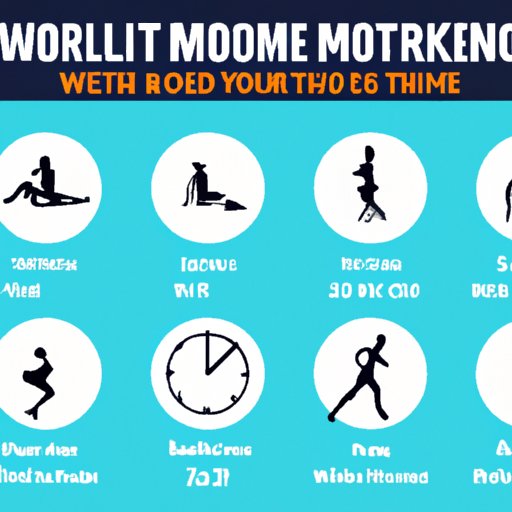
I. Introduction
With busy schedules and other commitments, finding time to exercise can be a challenge. It’s recommended that adults get at least 150 minutes of moderate-intensity exercise or 75 minutes of vigorous-intensity exercise per week, but some people might wonder if just 30 minutes a day is enough. In this article, we’ll explore the benefits, tips, and science behind shorter workouts to help you make the most of your exercise routine.
II. The Benefits of 30-Minute Workouts: Why Shorter May Be Better
One of the main benefits of 30-minute workouts is that they can be more manageable for people with busy schedules. Shorter workouts are also more convenient, as they can be done at home or in a nearby park, without requiring a gym membership or expensive equipment. Additionally, shorter workouts may be easier to stick to, increasing adherence and helping you establish a regular exercise routine.
There are many exercises that can be done in just 30 minutes. You can try high-intensity interval training (HIIT), which alternates short periods of intense exercise with active rest. Other options include brisk walking or jogging, cycling, swimming, or strength training with weights or bodyweight exercises.
III. Making the Most of Your Time: How to Maximize Your 30-Minute Workouts
When you only have 30 minutes to exercise, it’s important to make the most of your time. Start by warming up with some light cardio or dynamic stretching to raise your heart rate and prepare your body for more intense exercise. Be sure to include a cool-down period as well, such as gentle stretching or yoga poses to help prevent soreness and injury.
To get the most out of your workout, it’s important to properly progress and modify exercises. For example, if you’re strength training, gradually increase the weight or difficulty of the exercises over time. If you’re doing HIIT, gradually increase the intensity or duration of the work intervals. This will help you avoid hitting a plateau and continue to see progress.
IV. The Science Behind 30-Minute Workouts: What Studies Say About Their Effectiveness
There is scientific evidence to support the effectiveness of 30-minute workouts. One study published in the journal PLOS ONE found that just 30 minutes of daily exercise, even at a moderate intensity, can lead to significant improvements in cardiovascular health. Another study published in the American Journal of Epidemiology found that short bouts of exercise throughout the day, totaling just 30 minutes, can be just as effective as longer workouts for reducing the risk of heart disease.
However, it’s important to note that most studies have investigated the benefits of longer-term exercise programs, rather than just 30 minutes per day. While 30-minute workouts can provide benefits, they may not be enough on their own to achieve optimal fitness and health.
V. 30 Minutes a Day Keeps the Doctor Away: How Regular Exercise Can Improve Your Health
Regular exercise is essential for overall physical and mental health. It can help reduce the risk of chronic diseases such as heart disease, type 2 diabetes, and certain types of cancer. Additionally, exercise can improve mood, reduce stress levels, and improve cognitive function.
While 30 minutes of daily exercise may not be enough to achieve all of these benefits on its own, it’s a great start. Increasing the amount and intensity of exercise over time can help you achieve even greater health benefits.
VI. Mixing It Up: Creating Varied 30-Minute Workouts for Optimal Fitness
Varying your workouts can help prevent boredom and plateaus. There are many ways to mix up your 30-minute workouts, such as incorporating different types of exercises or equipment. Try alternating between cardio and strength training, or using resistance bands or free weights for a different challenge. You can also try out new types of workouts, such as Pilates or yoga, to keep things interesting.
VII. Conclusion
So, is 30 minutes of exercise enough? The answer is yes – as long as you’re making the most of that time and incorporating a variety of exercises into your routine. Shorter workouts can be more manageable and convenient, while still providing numerous health benefits. Remember to warm up, cool down, progress and modify exercises, and mix up your routine to keep things interesting.




